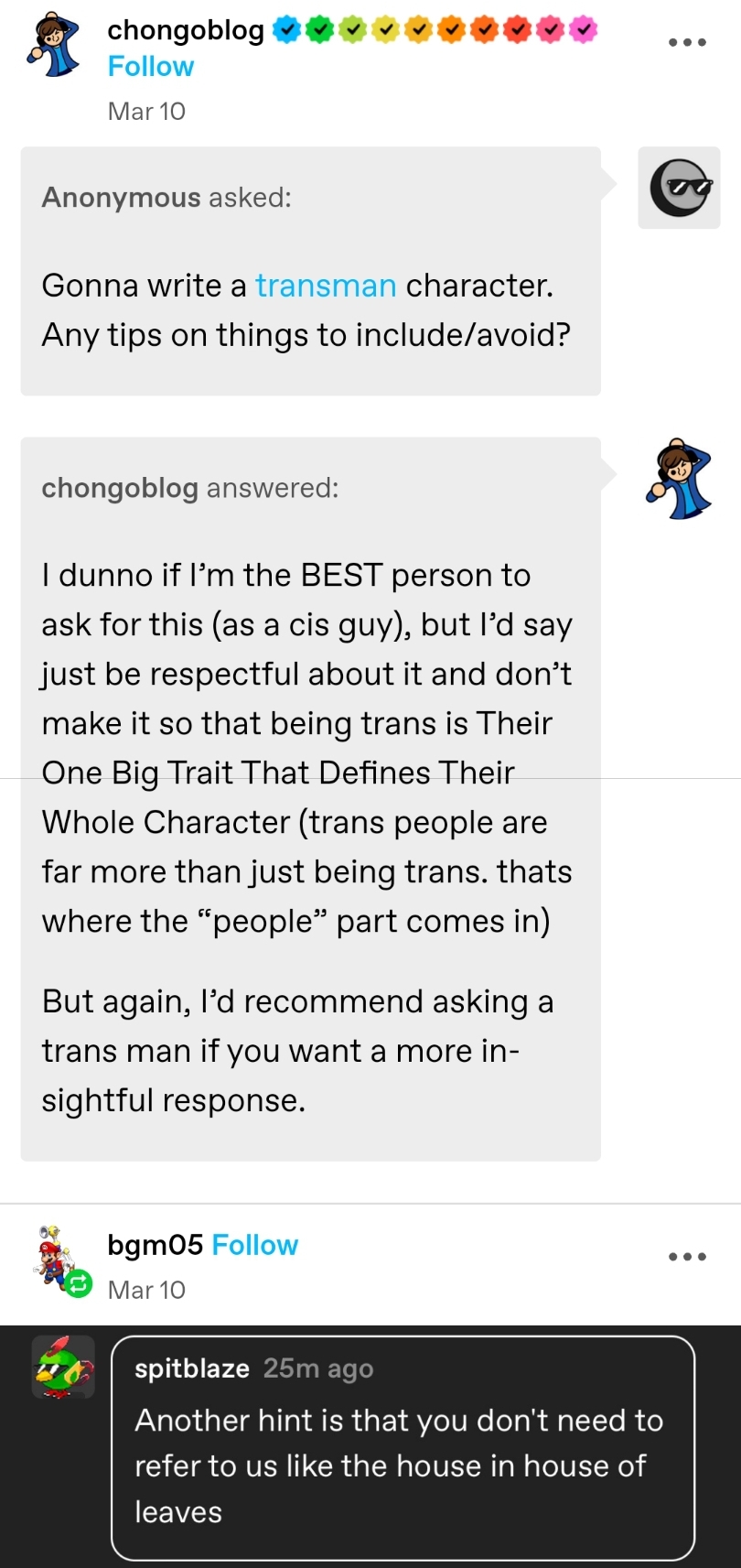traaaaaaaaaaaaaaaaaaaaaaaaaaaaaaaaaaaaaaaaaaaaaaaaaaaannnnnnnnnnnnnnnnnnnnnnnnnnnnnnnnnnnnnnnnnnnns
Welcome to /c/traaaaaaannnnnnnnnns, an anti-capitalist meme community for transgender and gender diverse people.
-
Please follow the Hexbear Code of Conduct
-
Selfies are not permitted for the personal safety of users.
-
No personal identifying information may be posted or commented.
-
Stay on topic (trans/gender stuff).
-
Bring a trans friend!
-
Any image post that gets 200 upvotes with "banner" or "rule 6" in the title becomes the new banner.
-
Posts about dysphoria/trauma/transphobia should be NSFW tagged for community health purposes.
-
When made outside of NSFW tagged posts, comments about dysphoria/traumatic/transphobic material should be spoiler tagged.
If you need your neopronouns added to the list, please contact the site admins.
Remember to report rulebreaking posts, don't assume someone else has already done it!
view the rest of the comments

It's extremely fun if you have the patience for it. You'll especially enjoy it if you have experience with and/or enjoy reading academic texts, because the format of the book (and the frame story) plays around with footnotes, endnotes, citations, and references quite a lot. Go into it like you're reading a Serious Academic Work and do all the things you'd usually do with that (margin notes, cross-referencing different mentions of similar ideas, etc.) and it's especially rewarding. Even without all that stuff, though, it's a banger of a horror-romance.
Skip to the end first and read maybe half of the sections before tossing it aside to read the conclusions sections of exactly 1/3 of its own citations?